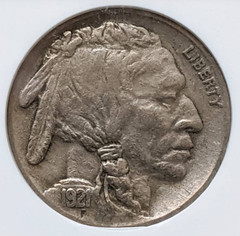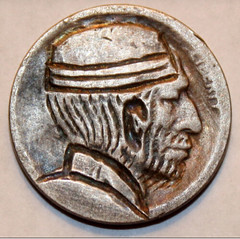
PREV ARTICLE
NEXT ARTICLE
FULL ISSUE
PREV FULL ISSUE
THE HISTORY OF HOBO NICKELSEd Krivoniak forwarded this article on the history of Hobo Nickels. Thanks. -Editor 

The first altered coins date back to the 18th century in Britain, France, and South Africa, where people engraved "love tokens" into silver. These metal emblems (usually etched with initials or names) were given as gifts and often incorporated into jewelry. When the Buffalo nickel was introduced in 1913, it became the most popular surface for coin engravers in the U.S. While previous coins featured small heads (a Lincoln cent, for example, had a head covering about one-sixth of the area), the Buffalo nickel had a Native American's head that occupies about five-sixths of the coin's surface. The large, thick metal template allowed more room for finer details and elaborate designs—a shift in convention. Nearly all older coins were adorned with female heads (such as the Liberty Head nickel). The male head on the Buffalo nickel, by contrast, had larger characteristics that allowed artists more space for altering the face into all sorts of characters, including skulls, self-portraits, or their friends. Even the reverse side of the coin (which features a buffalo) was often changed into another animal, such as a donkey or an elephant. Some artists went another route and turned it into a walking man wearing a backpack. Regardless of the chosen design, artists spent hundreds of hours using chisels, knives, hammers, and any other object fit for shaping and etching metal. These American hobo nickels started to emerge all over the country, and more and more people started to adopt the craft as the years went by. During the 1930s, the Buffalo nickel remained the most popular among engravers, and many of the early coin engravers continued to prefer the classic coin after it was replaced by the Jefferson nickel in 1938. From the 1940s, many new carvers appeared, and the design and subject matter of the coins began to change to reflect a contemporary style. It's believed that as many as 200,000 classic hobo nickels were created from 1913 to 1980, and many modern artists continue to practice the craft.
To read the complete article, see:

Wayne Homren, Editor The Numismatic Bibliomania Society is a non-profit organization promoting numismatic literature. See our web site at coinbooks.org. To submit items for publication in The E-Sylum, write to the Editor at this address: whomren@gmail.com To subscribe go to: https://my.binhost.com/lists/listinfo/esylum All Rights Reserved. NBS Home Page Contact the NBS webmaster 
|